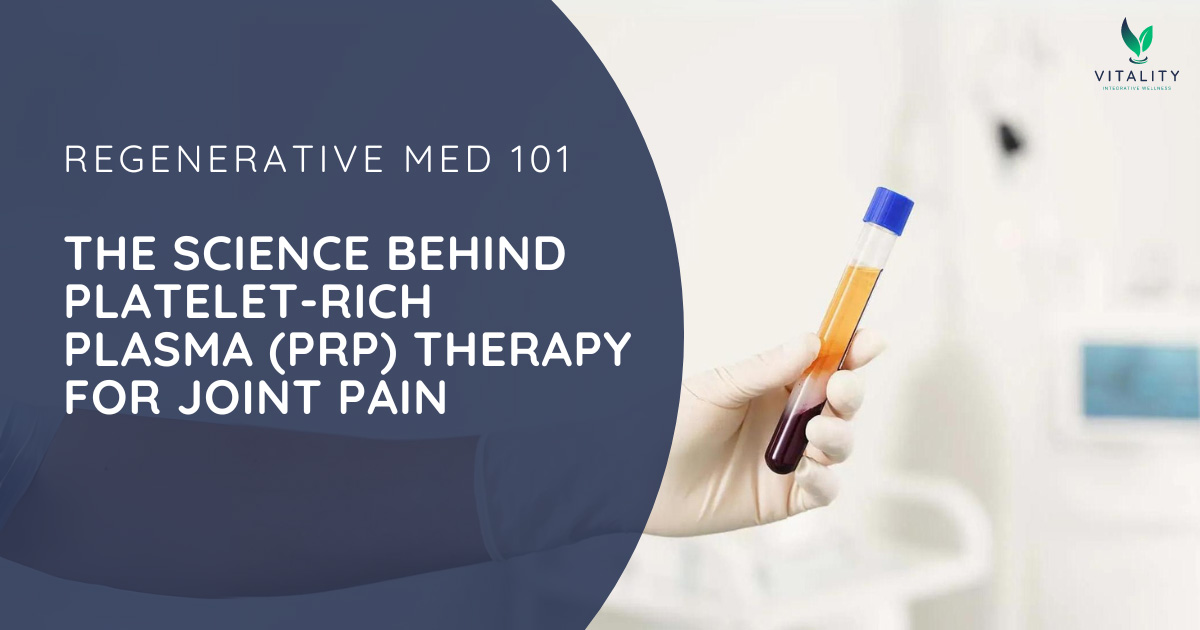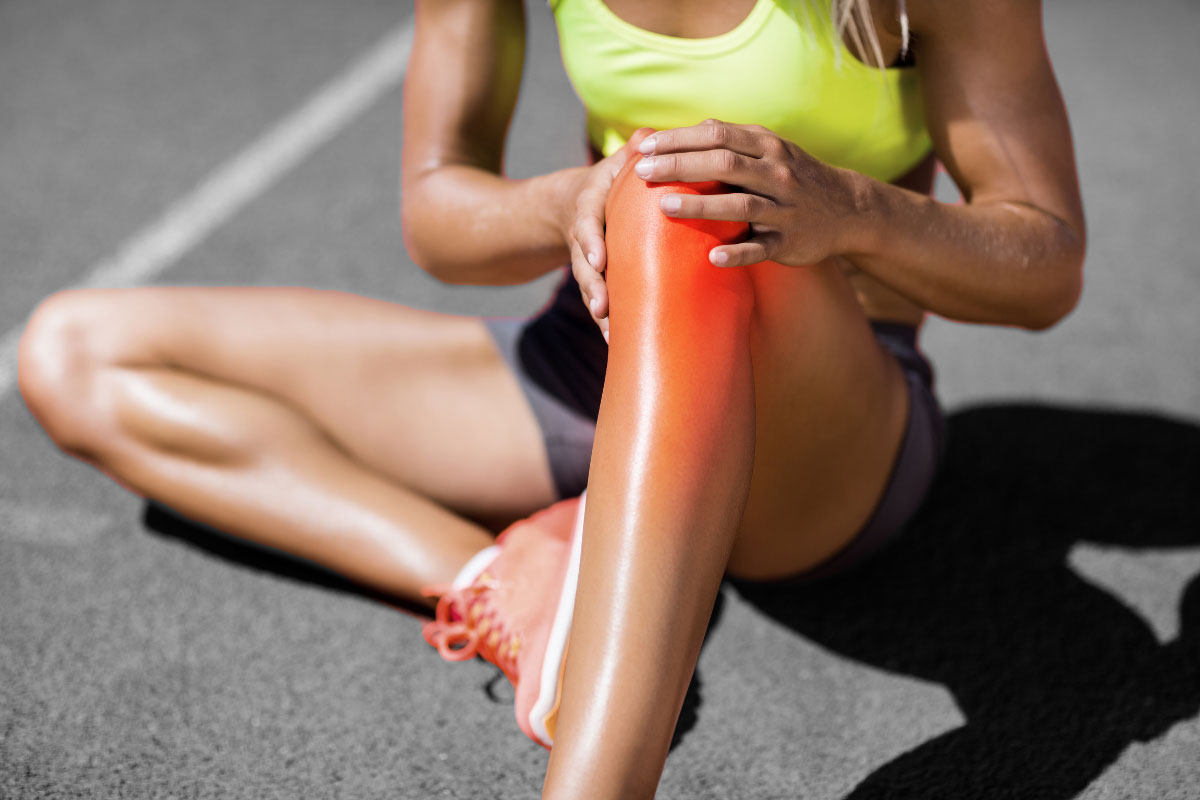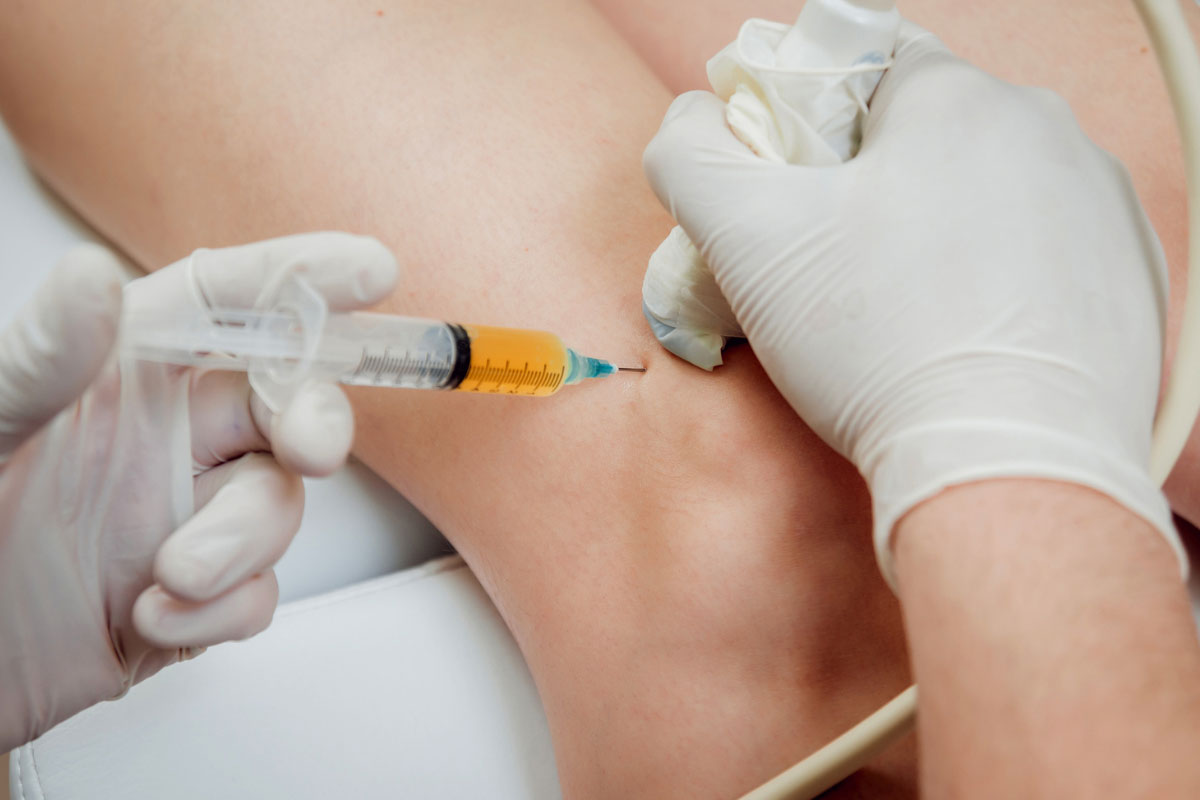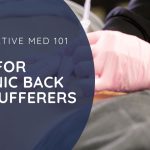
Understanding Your Joint Pain

Some causes of joint pain include:
-
-
- Wear-and-tear arthritis (osteoarthritis)
- Lifestyle factors such as weight, diet, and activity level
- Bursitis (inflammation of a bursa)
- Depression
- Sports injuries or falls
- Hypothyroidism
- Fibromyalgia
- Viral arthritis
-
The resulting pain and discomfort can significantly impact their quality of life, whether it's due to an injury, overuse, or underuse. Most soon find out that dealing with joint pain can be a challenge. Conventional treatments for joint pain usually focus on pain management rather than restoring function. So, a lot of chronic joint pain is only managed, not resolved.
What Happens When Your Joint's Connective Tissues Are Damaged?
The most common causes of joint pain will impact the connective tissues between bones. Anytime you sustain an injury to these tissues, your body rushes platelets to the affected area. The platelets carry with them a stash of healing proteins, including:
Growth factors: platelet-derived growth factors are biologically active substances that help tissues heal themselves by encouraging healing cells to go to the affected area, regrow damaged tissues, and form new blood cells to regain the function of the joint.
Cytokines: are signaling molecules that help regulate (causing or reducing) inflammation, immune response, and cell communication. These proteins work together to reduce pain, swelling, and stiffness in the affected joint, promoting healing and restoring function.
Chemokines: These proteins signal healing cells, like cytokine factors, but they also bring other types of cells, like white blood cells, to the affected area.
Over time, with the proper treatment and rehabilitative care, the injured connective tissues may eventually mend, restoring mobility and lessening pain. However, in some cases, the body cannot heal itself. Your body can't get enough platelet-rich blood to the affected area to regenerate cells if the injury or wear and tear has become chronic or severe. That's where PRP Therapy comes into play.
How Does Platelet-Rich Plasma Therapy Work
The effectiveness of PRP therapy lies in the healing properties of platelets in your blood. Just as your body would do on its own, PRP Therapy uses your platelets to signal the same proteins and growth factors that normally stimulate tissue repair and reduce inflammation. Much like other regenerative medicine treatments, PRP therapy is a minimally invasive treatment that may relieve pain and repair damaged joints.
The process is done in three simple steps:
First, we take a small amount of your blood.
Then, we separate out the platelets to get a rich, concentrated sample.
Finally, we inject the platelet-rich plasma into the affected joint.
How Can PRP Therapy Reduce Pain in the Joints?

-
-
- Alleviating joint pain.
- Improving or restoring function and mobility.
- Reducing inflammation.
- Potentially regenerating damaged joint tissues.
-
It can do all this because the treatments help trigger cellular responses that stimulate healing. They may also help to disrupt pain signals and can be just as effective as pain management drugs. The treatment has shown particular promise in providing therapeutic relief in patients with chronic and severe pain conditions such as osteoarthritis and tendon injuries. PRP treatments have limitations and aren’t suitable for every patient, so we work with you to assess your situation and develop a customized treatment plan built specifically to meet your needs.
Our approach to Regenerative Medicine and Joint Pain
Our team of integrative healthcare providers tailors each program to suit the individual needs of the patient, ensuring that they receive comprehensive care throughout their healing journey. By combining PRP therapy with our other services like massage, chiropractic care, and cold laser therapy, we aim to not only reduce pain and inflammation but also improve mobility and functionality in the affected joints. We believe that this holistic approach to regenerative medicine and joint pain is key to achieving long-lasting results and helping patients regain their quality of life.


